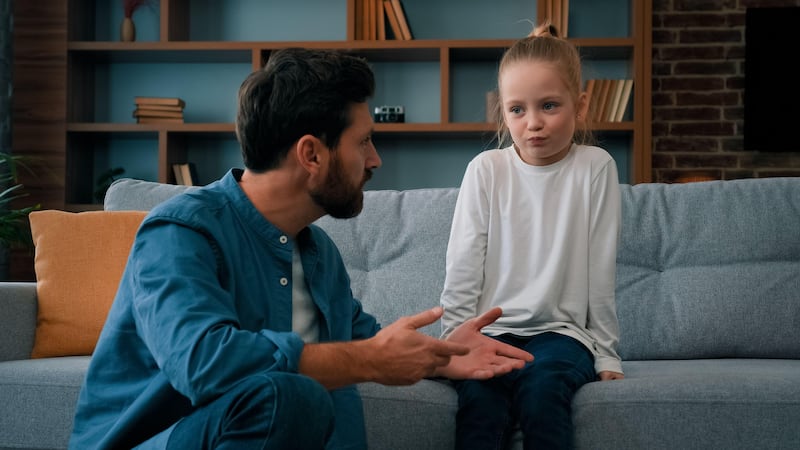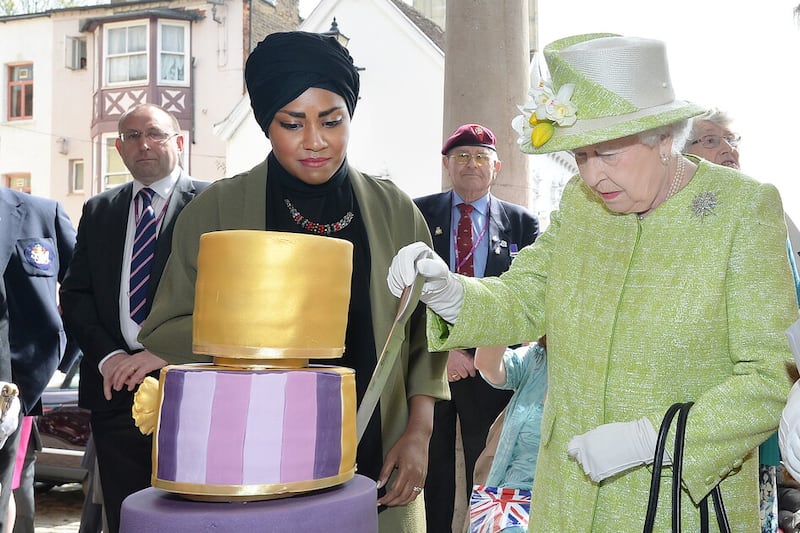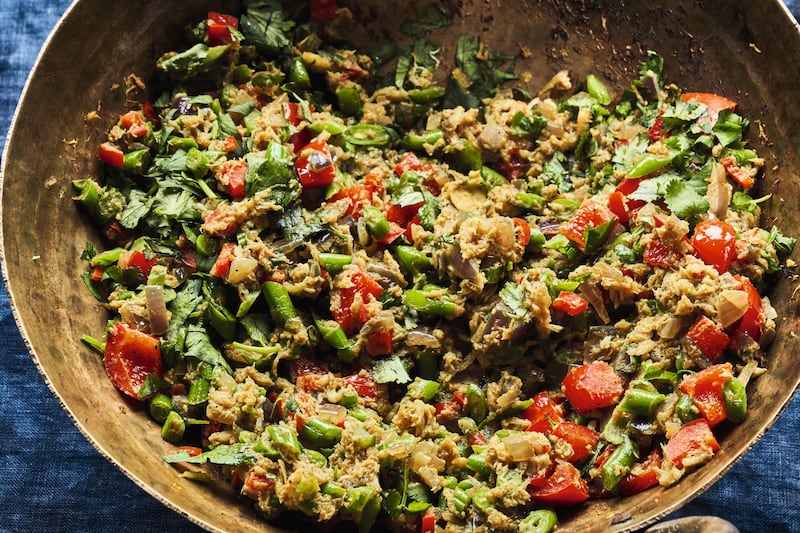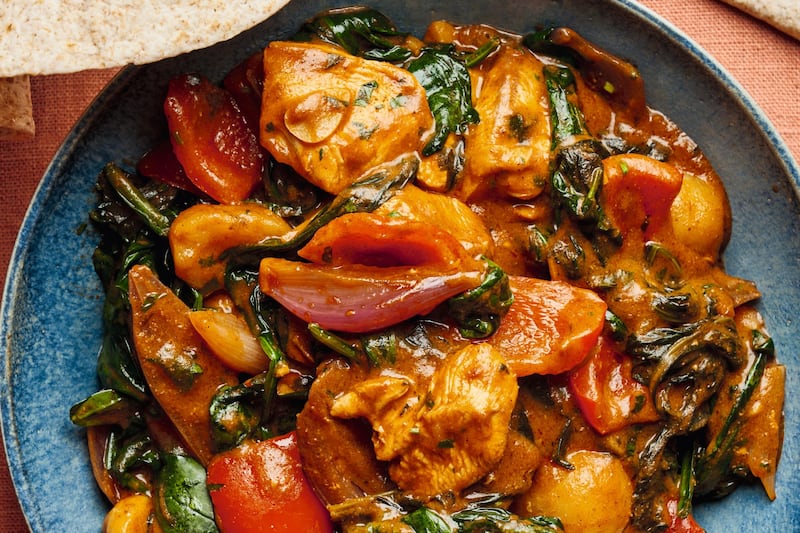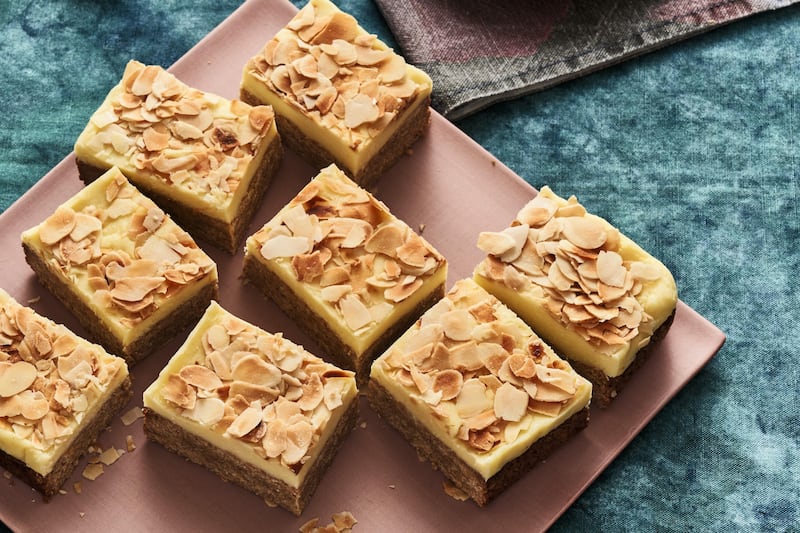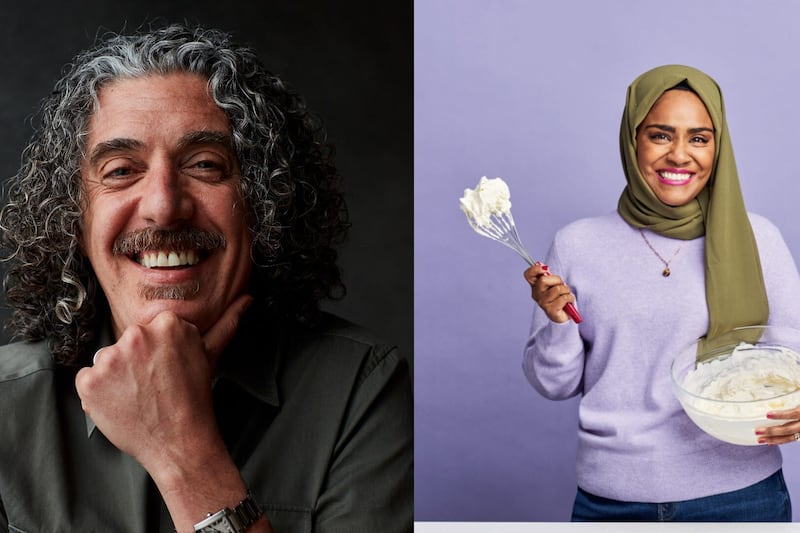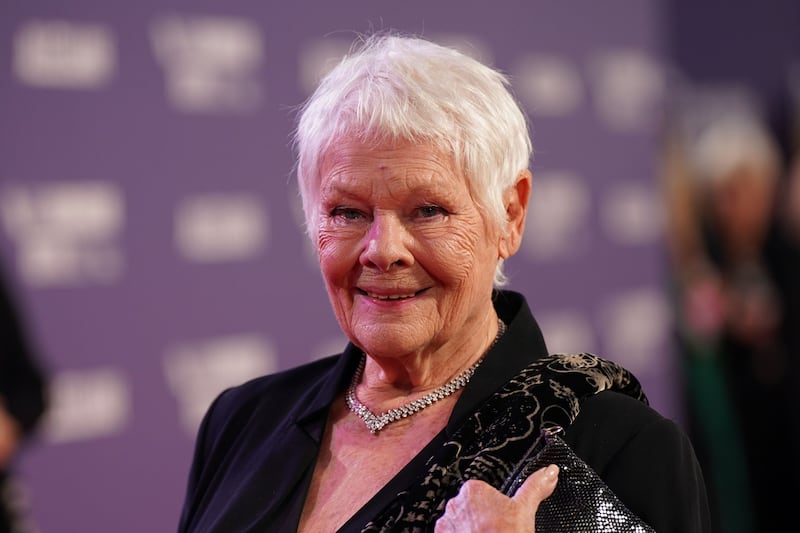SHE might have found fame on a baking show, but Nadiya Hussain has never actually written a book specifically about breads, cakes, pastries and cookies.
“It’s really funny, because people just made the assumption that I had already done it,” Hussain says with a laugh. “But five years later, finally writing a book that’s just about baking is really exciting… It’s a book dedicated to some of the bakes I really, really love.”
Since winning the sixth series of The Great British Bake Off back in 2015, the 35-year-old has maintained a high profile, writing cookbooks and presenting her own BBC shows. As this is her fifth cookbook, Hussain well and truly knows how things work by now – but she says choosing which recipes to include for this one was trickier than normal.
“It’s tough, honestly, when baking is the thing you do and the thing you love to do the most,” Hussain says, words tumbling out of her mouth at a million miles an hour. “I could’ve written and written and written… There could be volumes, which isn’t a bad thing entirely, I suppose.”
Each bake had to be “something that I believe in”, she adds, “and every single recipe I test at home – I do each one and it takes me weeks, months of testing”. It might sound arduous, but Hussain calls it “my most favourite bit, because that’s when I develop them and make them the best they can be”.
As we’ve come to expect from Hussain’s cooking, the bakes are accessible, delicious, and draw their inspirations from all over the world. Before the pandemic, she says she got a lot of her inspirations from travelling – but it wasn’t always like that. It’s only really the past five years she’s seen more of the world, but this never hindered her creativity.
“Because I didn’t travel before, I only had my imagination and and the internet,” she explains. “I think I still very much do that, even though I do travel a lot more. I still take inspiration from just being curious about different cuisines. I like to take their version and turn it into something a bit different.”
Hussain is particularly proud of her latest book though, because “there are lots of different things in there that make you feel like you’re travelling all over the world” – no bad thing when international travel isn’t quite as easy as it used to be for the vast majority of us right now.
Baking has had quite the year too though, and Hussain understands why it’s used as a form of therapy. “Life is so busy, and what we do is spend so much time on the important, busy aspects of our life that we neglect the other bits of our life: our mental health,” she says.
She has been outspoken about her own personal struggles on that front, and says: “Baking allows me to look after the part of me that I neglect, which is my mental health.”
Hussain appreciates how baking requires you to concentrate on one thing, particularly as she admits to having “a really overactive mind” – something keenly felt in how quickly she talks, racing through a range of different subjects.
It’s fair to say she’s done a lot to help open up conversations around mental health, particularly in British Asian communities, and for that she’s often been called a role model. This is a label Hussain has shied away from since becoming a public figure though (“I felt like a wanted to do was cook and bake and always be known for that”).
Her approach has changed over the years, however: “I know I’m a first-generation British Bangladeshi woman of colour. When you are lucky enough to be all of those things, you do have a responsibility to all of those groups, I suppose.”
She’s aware “there aren’t that many people like me” in the the worlds of publishing and television – and growing up, she says: “I would never have looked at the telly and thought I really want to do that job, because I never saw anyone like me doing it, it didn’t feel like the right place for me.”
This isn’t to say the responsibility of being a role model doesn’t “weigh heavy on me”, she says, but Hussain is more hopeful and positive about it than she once might have been. “I don’t take it lightly, because I know it’s one [responsibility] that I have to embrace, at the same time as being slightly afraid of.”
Luckily, any time she feels overwhelmed, there are more recipes to try and cakes to bake. “I certainly don’t have room to complain,” she says with a giggle. “I might have the best job in the world.”
:: Nadiya Bakes is available to watch now on BBC iPlayer. Nadiya Bakes by Nadiya Hussain, photography by Chris Terry, is published by Michael Joseph, priced £22. Below are two recipes from the book for you to try.
BANANA ICE CREAM CHEESECAKE WITH BLUEBERRY COMPOTE
(Serves 8–12)
For the base:
160g porridge oats
160g roasted whole hazelnuts
60ml coconut oil, plus extra for greasing the tin
185g golden syrup
A pinch of salt
For the filling:
7 bananas, chopped and frozen, about 580g
2tbsp golden syrup
½tsp ground cinnamon
1tbsp cocoa powder
For the compote:
250g fresh or frozen blueberries
½ lemon, zest and juice
100g caster sugar
Method:
Line and lightly greasing the base and sides of a 20cm round loose-bottom tin, 7.5cm deep.
Make the base of the cheesecake by toasting the oats and the hazelnuts in a large frying pan on a medium heat for about five minutes until they just start to turn a golden brown, stirring constantly. Blitz to a fine crumb in a food processor. Add the coconut oil and the golden syrup, and pinch of salt, and blitz again ’til all clumps together.
Throw the mixture into the prepped tin and, using the back of a spoon, press into the base and 2.5cm of the sides. Leave to chill while you make the filling.
For the topping, allow the bananas to defrost very slightly for a few minutes then blitz in a food processor with the golden syrup, cinnamon and cocoa ’til you have what looks like a soft-scoop ice cream. Quickly spoon the mixture on top of the prepped base and pop into the freezer.
When you are ready to eat, make the compote by adding the blueberries, lemon zest and juice and sugar to a pan and stirring over a medium heat for a few minutes ’til the blueberries have just softened.
Take the cheesecake out of the freezer, slide it out of the cake tin and put it onto your serving dish. Add the warm compote on top and leave for just a few minutes before slicing and enjoying.
MANGO AND COCONUT YOGHURT CAKE
(Serves 8–10)
For the cake:
Butter, for greasing the tins
50g desiccated coconut
1 mango, peeled and thinly sliced lengthways
400g Greek yoghurt
300g caster sugar
7 medium eggs, lightly beaten
400g self-raising flour
1tsp baking powder
A pinch of salt
For the German buttercream:
150ml whole milk
100g caster sugar
3 egg yolks
1tbsp cornflour
350g unsalted butter, at room temperature
½tsp vanilla extract
For the decoration:
25g coconut chips or desiccated coconut, toasted
150g mango pulp
To serve:
Greek yoghurt
Extra mango pulp
Method:
Preheat the oven to 180C/fan 160C. Line the bases and grease two 20cm deep round cake tins.
Toast the coconut in a small pan until golden; sprinkle evenly into the bases of the cake tins. Add the mango in some sort of orderly fashion, straight on top of that coconut.
For the cake, pop the yoghurt into a large mixing bowl with the sugar, eggs, flour, baking powder and salt and mix until you have a smooth, shiny cake batter. Pour the mixture into the tins and tap the tins a few times on the work surface to level off the top. Bake for 40–45 minutes until golden and a skewer inserted comes out clean. Take the cakes out and leave in the tins to cool for 15 minutes, then turn out and leave to cool completely.
Meanwhile, make the buttercream by adding the milk to a saucepan with the sugar. When it just comes to the boil, take off the heat and mix. Add the egg yolks to a bowl with the cornflour (and vanilla extract) and whisk. In a steady stream, pour in the hot milk mixture, stirring constantly. Pour the mixture back into the pan and heat gently until it all thickens to a thick custard that coats the back of the spoon. Transfer to a large bowl, cover with cling-film and leave to cool, then chill in the fridge.
When chilled, whisk the custard mix, then add a good tablespoon of butter at a time, whisking after each addition. Keep whisking until you have a really stiff, pipeable buttercream. Pop into a piping bag.
Take the first cake, with the fruit side facing upwards, and arrange on a serving dish. Pipe swirls of the buttercream all around the edge and then in the centre, covering the top of the cake. Pop the other cake on top and make the same swirls around the edge, avoiding the middle and leaving gaps between the swirls.
Pour the mango pulp into the centre, allowing it to drip down the sides. Sprinkle it with the toasted coconut. Serve with Greek yoghurt.

